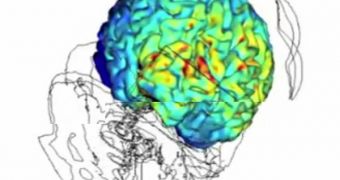In a new series of experiments, scientists in the United States determined that electrical brain stimulation can contribute to reducing migraines in chronic migraine patients. The positive effects were made visible after just four weeks of treatment.
The area primarily targeted by this therapeutic approach is the motor cortex, which is responsible for controlling voluntary movement. The work was led by experts at the University of Michigan School of Dentistry, Harvard University and the City College of the City University of New York.
Researchers used a non-invasive treatment method, which did not involve placing electrodes under the skull. Their preventive approach is called transcranial direct current stimulation (tDCS).
It was applied to 13 chronic migraine sufferers. Chronic patients are those who suffer from at least 15 migraine episodes monthly. Each of the test participants underwent 10 tDCS sessions, the team says.
On average, the 13 individuals reported a 37 percent decrease in the intensity of their headaches. One of the most interesting things about this approach is that its effects appear to be cumulative, and tend to kick in after about four weeks of treatment.
Details of the research were published in the latest issue of the medical journal Headache. U-M School of Dentistry assistant professor, Alexandre DaSilva, was the lead author of the study paper. He says that participants had suffered from migraines for an average of 30 years.
“This suggests that repetitive sessions are necessary to revert ingrained changes in the brain related to chronic migraine suffering. We went beyond, 'OK, this works.' We also showed what possible areas of the brain are affected by the therapy,” DaSilva explains.
By using a high-resolution computational mode, the research team was also able to track how electric current flowed through the brain. This enabled them to figure out how tDCS was influencing various areas of the human brain.
“Previously, it was thought that the electric current would only go into the most superficial areas of the cortex. We found that pain-related areas very deep in the brain could be targeted,” the expert concludes.

 14 DAY TRIAL //
14 DAY TRIAL //